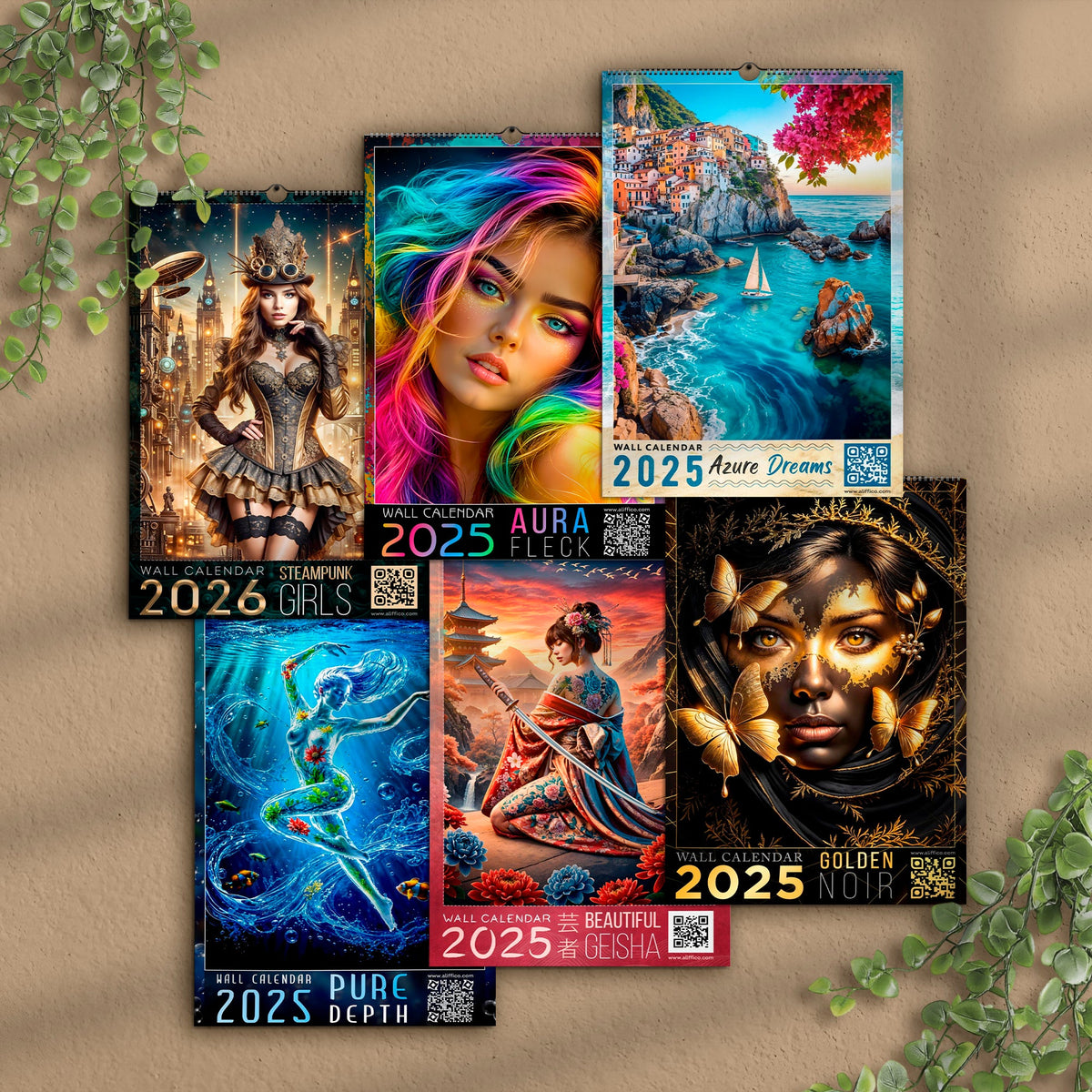
The Collector’s Eye: Why Limited-Print Calendars Are Future Treasures
Some art lives in galleries. Some live on bookshelves. And then there’s the kind that quietly graces your wall—ticking away the days, but never just tracking time.
There’s something undeniably poetic about a calendar 2025 that doubles as a limited-run art collection. It won’t stay in your life forever, and perhaps that’s the point. It’s here, it’s now—and then it’s gone. And in that impermanence lies its magic.
Calendars, but Not as You Know Them
Most of us have been conditioned to treat calendars as functional objects. They remind us of appointments, track school terms, or let us count the days until vacation. But in certain circles—especially among those who collect rare books, limited vinyl, or artist zines—calendars are being reevaluated. Not for their usefulness, necessarily, but for their ephemerality.
Because unlike traditional prints or mass-produced posters, a monthly calendar 2025 has a built-in expiration. Once the month passes, the page either disappears… or becomes something more. A collector’s fragment. A one-of-a-kind print that captures a very specific moment in time.
Print-on-Demand, Not Mass-Market
This new wall calendar 2025 collection follows a carefully curated, print-on-demand model. That means each calendar is made only when someone orders it—no warehouses, no overstock bins, no remainders at year’s end.
What makes this interesting for collectors is that it likely won’t be available in unlimited quantities. Once 2025 passes, there's a strong chance the artworks will be retired or replaced. And in a world where rarity often fuels value, that possibility alone shifts the calendar from the realm of stationery into something closer to art publishing.
Printed on 11"x16.5” premium 250 gsm silk-coated paper, each page arrives vibrant and ready to hang, tear away, or frame. Think of it less as a planner—and more like a 12-piece portfolio of seasonal storytelling.
A Note on Conscious Collection
Now, it’s fair to wonder: isn't collecting supposed to be sustainable? After all, doesn’t chasing “rare” contradict mindful living?
It’s a valid point—and one that this calendar series takes seriously. Every edition is eco-responsibly produced, using FSC/PESC-certified paper and local printing partners to reduce environmental strain. No mass production. No overprinting. No waste.
What you receive, then, isn’t just a large calendar 2025—it’s a meaningful object made intentionally, both in design and delivery.

Art That Won’t Repeat
Each of the five collections—Geisha Samurai, Steampunk, Golden Noir, Water Pure Depth, and Colorful—carries its own visual signature. While none of the prints claim to be museum-grade, many of them would sit comfortably alongside gallery-style decor. In part, that’s because they aren’t designed to be generic. They’re designed to evoke something.
Some may eventually treat these torn pages like postcards from a year of inner journeys—each print marking a mood, a season, or a mindset. Others may tuck them into portfolios, hang them across gallery walls, or give them as keepsakes.
Will they appreciate in value? That’s difficult to say. But then again, most collectors aren’t driven solely by market value—they’re guided by instinct. And by love.
The Psychology of Limitedness
In psychology, there’s a well-known phenomenon: scarcity increases perceived value. It’s the same principle that fuels limited-edition sneakers or single-press vinyl records. When something feels rare, we treat it with more care. We assign meaning to its presence.
A 2025 calendar wall edition that exists only in this one iteration—and then never again—can carry that same kind of weight. Not everyone will recognize it. But those with a collector’s eye just might.
The Quiet Luxury of Now
Not everything collectible needs to be old. Sometimes, what’s rarest is what’s still unfolding.
So if you’re curating your walls with intention—or gifting to someone who treasures uniqueness—this might be the right moment to consider a full year wall calendar 2025 not as a tool for scheduling but as a 12-month timeline of inspiration.
Because when December 2025 rolls around, these images won’t come back. But they can live on—on your walls, in your memory, and perhaps, years later, as beautiful artifacts of now.
Own a rare piece of 2025. Discover the calendar collections before they vanish.







